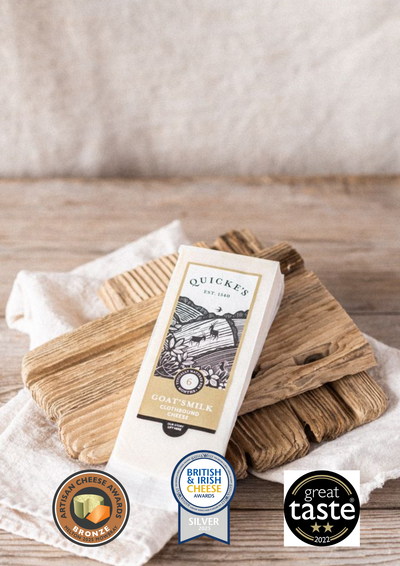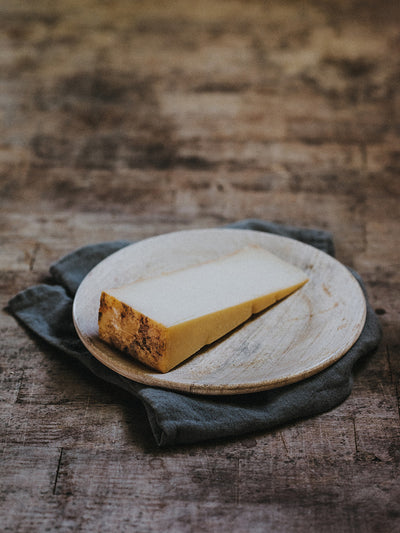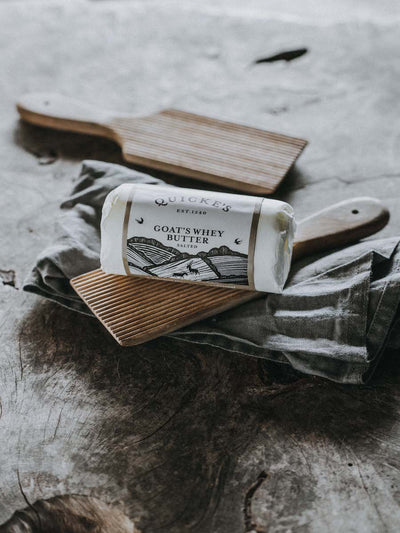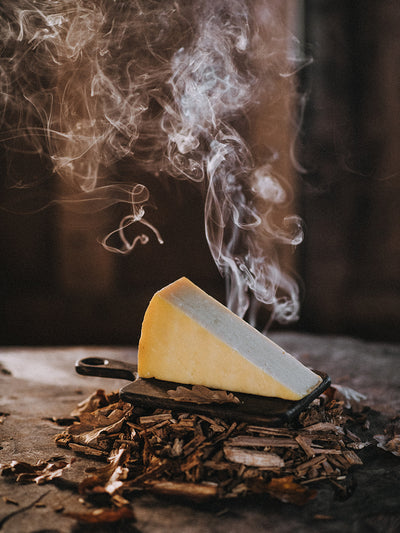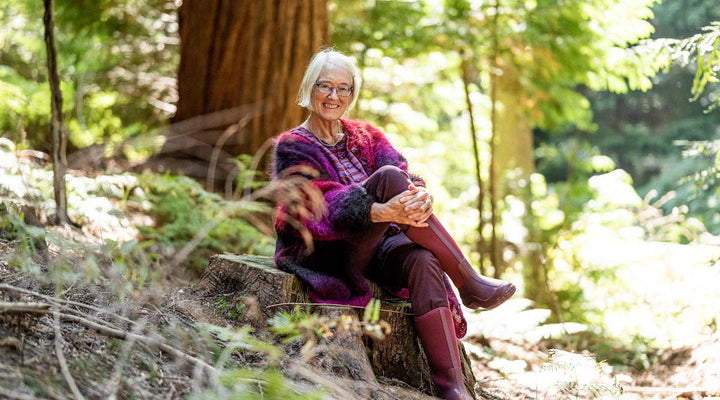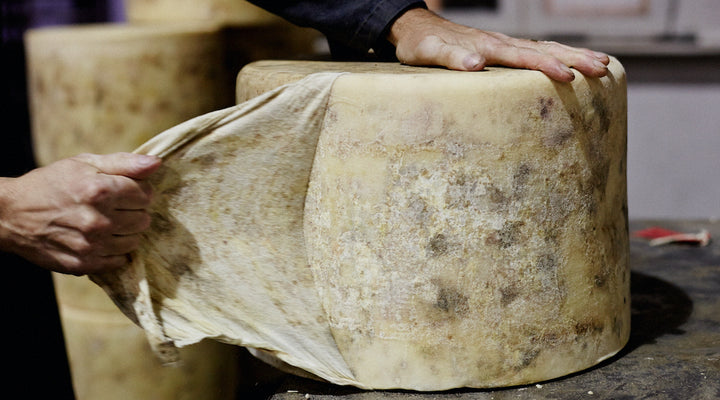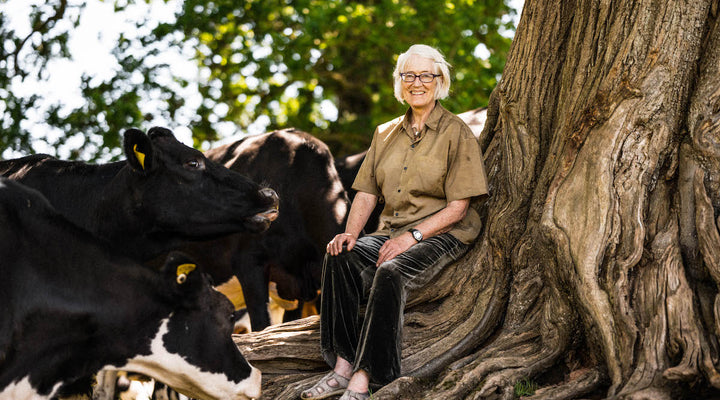I love our beautiful landscape, the rich biodiversity of our woodlands, fields, hedges, our river and streams. Does that mean all’s well in the world? We know our planet is warming and our biodiversity is reducing. The narrative from many quarters is that livestock farming, particularly ruminants like cows are a major source of our problems. For us, as dairy farmers and cheesemakers, are we doing something we will be cancelled when our successors look back at our scorecard, like taking part in the slave trade or driving over the limit: once acceptable, and now not?
I need to declare an interest. I’m not an impartial observer, or an expert in the field. And it is the key issue of our time, which we need to address. We spend a lot of time thinking about it, how to navigate doing right by the planet, our people and our community and at the same time make the most delicious food from our land and make a living for ourselves and our team.
In this country we are producing milk at half the global average for emissions of greenhouse gases in this country, from more efficient farming. Not producing animal products risks taking it to other countries where their practices are more damaging for the environment, like virtuously recycling plastic here only to find out it’s being dumped into the sea in the Far East.
The exciting thing is that farming is one of the few human activities that are part of the solution as well as the problem . Our woodlands, soils and hedges sequester about half the carbon output of our milk. Our mixed woodland and hedges are rich sources of biodiversity not available from plant-based farming that works on large fields cultivated intensively. There is an increasing understanding that methane, a big contributor to livestock farming emissions, lasts only a few years in the atmosphere, and it’s treated in the calculations like it lasts for centuries like carbon dioxide.
We’ve got the area to generate our own energy, saving emissions with our existing and new photovoltaic panels. We are using wood from the farm to heat houses, and using it for bedding that then forms more soil organic matter.
So far, so good. And it’s no pass given the scale of the challenge for humanity to rest on our laurels, and say what we’ve done so far is enough. What to do that isn’t greenwashing or virtue signalling, and which really makes a difference? Fortunately, the smart people of our time are bending their minds to the fiercely complex science of it and distilling it down to things we can sensibly do on the farm. We are breaking it down, eating the elephant in bite sized chunks.
The really big thing we can do is work on our soil organic matter. This is such a sweet spot. The amount of soil organic matter has lost since industrial farming started is a big contributor to the increases of carbon in the atmosphere. Continuous arable farming strips organic matter out of the soil, the magic money tree of industrial farming. Our forefathers knew the value of rotation, ley farming, returning the fields to grass and clover to restore soil carbon, and we can already see the benefits to soil of rotation in how productive, workable and moisture-retentive the soil is.
You can feed grass and clover to biodigesters to make methane and you don’t get delicious cheese out as a result. We use the grass and clover to graze our animals, and make silage. We spread animal manures which arise from straw and feed that we grow in a beautiful perpetual motion machine.
We need to reduce the methane our animals produce per litre of milk. The clear and current things to do are make sure the breeding of the animals is to produce less methane, and make sure that we feed and care for the animals so they produce as much milk as they are sensibly capable of while living the longest productive lives in the herd. In future there will be things we can do to feed the animals to produce less methane, and we need to make sure these don’t have unintended consequences. There is an antibiotic that can already do that which is not usable because of causing antimicrobial resistance, which is why it is illegal in the UK. We know the scientists are hard at work on getting the best solutions.
Soil needs continuous plant cover to protects and feed the soil microflora adding to soil carbon. We spread our dirty water and slurry that we collect from cheese and dairy washings and cow manure onto the land. It’s liquid so it soaks into the ground, taking the nutrients safely into the reach of soil microflora before it can go into the air or groundwater where it can be a pollutant. The timing of when we spread manures has a big impact. Warm enough so the soil microorganisms and plants make use of the nutrients and liquid, firm enough not to compact the soil. We replace bought in fertiliser with our home-produced manures, which is why our tractors are travelling further to make sure we reach the whole farm with the natural stuff.
We test the soil to know what nutrients. soil pH, and organic matter is where. We’ve just invested in the kit to use satellite data to guide our tractors to spread the right amount in the right places. Our farming understanding of soil is getting a huge leg up, now people understand how important it is: the whole of humanity and the terrestrial natural world relies on the top few inches of soil. For almost the whole of my farming career, thinking about soil was what weird old-fashioned people or cranks did. Now the some of the world’s finest minds are bending their minds to how it all works in all its beautiful complexity. Just like combined activity by the world’s scientists and governments was able to start to heal the ozone layer, we can come together to be the stewards of our planet’s health.
Mary Quicke

